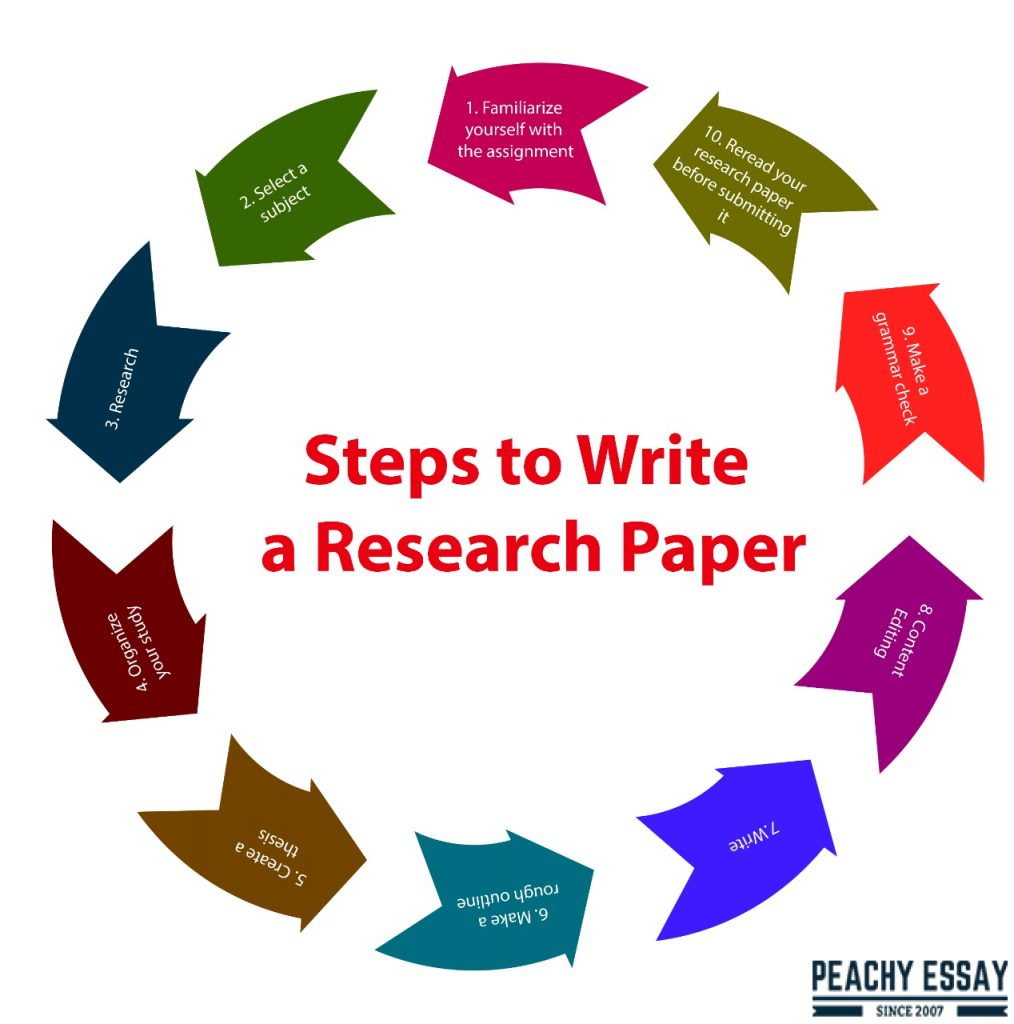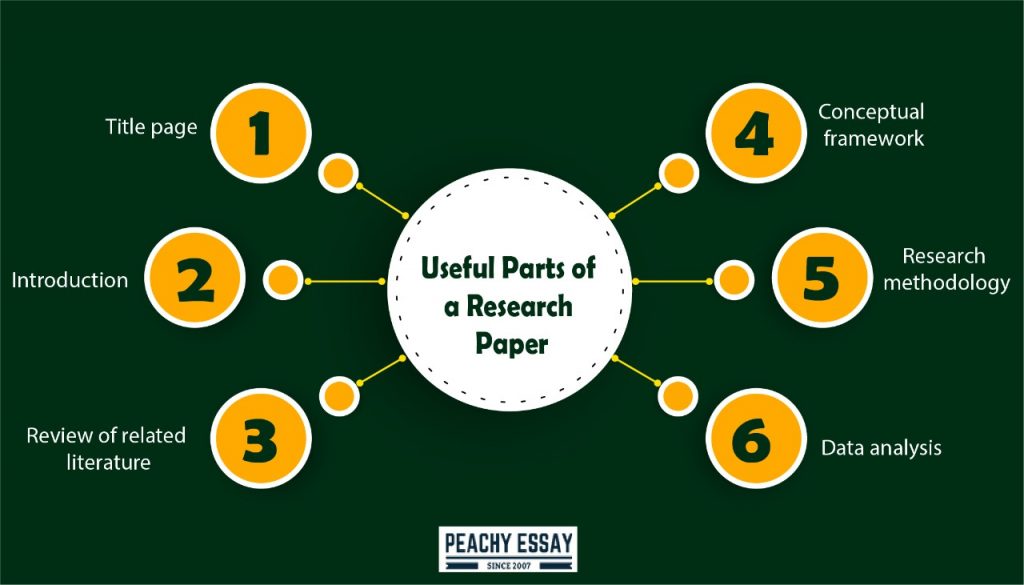If you’re a college student, you’ll almost certainly be required to compose a couple of research papers before your graduation. In case you’ve never written a research paper before, it can be not very comforting.
Research papers are difficult and time-consuming projects, and they account for a significant portion of a student’s grade in all classes. Academic writing is difficult, yet written communication skills are necessary for success in college, graduate school, and future employment. That is why mastering the skill of paper writing is so important.
If you’re unsure where to begin, read on to learn about practical tactics for making this process as painless as possible.
Steps on How to Write a Research Paper
Here are the steps on how to write a research paper.

Familiarize yourself with the assignment
This may seem self-evident, but understanding what your professor wants prior to crafting your research paper is critical. Several scholars overlook this step and regret receiving a low score on a course they were enthusiastic about. It’s usually due to a failure to read the directions.
Spend some time reviewing the task. Examine everything your instructor has given you. Read the prompts, assignment, grading rubric, and any other materials you’ve been given very carefully. Highlighting and taking notes on the assignment may also be beneficial. Take some time to figure out what you’re supposed to write and how you’ll be judged on it. And if you’re unsure, ask! Before you choose a topic, seek clarification from your teacher. You’ll know you’re on the correct track if you do it this way.
Select a subject
It’s time to determine what to compose in your research paper now that you know what you’re supposed to do. This can be not very comforting, but don’t get too worked up over it. Writing in your area of interest can be really beneficial, but don’t worry about coming up with the right topic. A contentious topic is good in many circumstances since it allows you to practice objectively explaining opposing viewpoints and even defending one if the task requires it.
Use your instructor’s suggestions to help you choose a topic for your paper. Choose another topic if you have a favorite but are having problems fitting it into the guidelines. It will be easier for you to write on a relevant topic to the task in the long run. It’s necessary to be interested in the subject matter you’re handling, but you don’t have to adore it. It’s also important to remember that you can utilize your assignments to understand new things. By the end of this procedure, you should have a good understanding of the subject, and for now, you don’t have to know all the things.
Research
Various persons will conduct their research in different ways. Nevertheless, it’s critical to remain concentrated and move rapidly. When doing research, keep in mind to skim, identify credible sites, and don’t overlook material.
Work to comprehend all of the various points of view and ideas on your subject. This can be accomplished by reading various articles and books about the topic. You can also consult an expert for more details about the topic.
Organize your study
Once you have all the data, the fourth step entails getting organized. Varied people have different preferences in this area, just as they do in research. The nature of your assignment may also determine it. When it comes to arranging your research, a bibliography (meaning “book writing,” this includes books, periodicals, and other sources you’ve used) is helpful.
If you are asked to submit a list of references with your paper, make a bibliography that fulfills the paper’s criteria. Consider how you’d like to organize your research if you’re building one for yourself. It could be a good idea to save resources to your browser’s bookmarks or create a digital bibliography that permits you to link the materials you find. You may choose a written list of your materials, or you may prefer to jot down everything you’ve learned that’s pertinent to your assignment on notecards or sticky notes, and then arrange your research paper on a table or the floor.
Create a thesis
You’re ready to express your claim now that you know what you’ve been asked to do, that you’ve picked a topic that suits the assignment, and that you’ve researched and structured that information. Your paper needs a thesis, even if you are not opposed to anything. A thesis is a concise statement that you, as an author, make for the readers of your work to explain or prove what you’re attempting to say.
When creating a thesis, a good place to start is with a one-sentence answer to the question, “What is your paper about?” The following are some instances of possible responses:
The bond between dogs and humans is explained in my paper.
It has to do with university policies about first-year students residing on campus.
That wasn’t so difficult, after all. It’s crucial to realize, though, that this is only the beginning. Many students stop just there and don’t comprehend why their thesis statement received a poor grade from their instructor. A thesis must be conclusive, and it must not be about you.
Make a rough outline
The way you write your outline, like a bibliography, may be determined by your assignment. If your teacher has requested that you submit an outline, make sure it matches the example, requirements provided. Even if you are not required to produce an outline, it can be a useful tool in developing your paper.
Write
Finally, it’s time to sit down and compose your paper. You may feel as though you should have begun writing sooner, but don’t worry: the work you’ve done thus far is crucial. It will assist you in writing a research paper that is strong, clear, and intriguing.
Don’t be a perfectionist when you’re writing. Don’t stress about finding the perfect words, correcting your language, or coming up with the perfect title. As you revise, there is still time to perfect your research paper. Right now, all you have to do is write.
It’s a good idea to understand your research, but avoid direct writing from it. It’s easy to plagiarize if you’re not writing uniquely. You’ve already put in a lot of effort, so believe it and compose your research paper from memory. It’s fine to check up on a specific phrase or statistic, but at this stage, your thoughts should be entirely your own.
Avoiding plagiarism is easier when you work from your own ideas. Plagiarism entails using of another person’s words or ideas without giving credit. This may appear not very comforting, but it does not have to be. You may be certain that you’ve written your own paper that builds on the writing, ideas, and effort without stealing, duplicating or plagiarizing if you follow the procedures given in this article.
You must cite your source if you quote something verbatim. Use quotation marks and credit the quote’s source. On a References page, you’ll also need to give further details on the quote. It’s still necessary to provide credit if you paraphrase someone’s idea. You don’t need to use quotation marks here, but it’s crucial to acknowledge the source of the notion.
Content editing
Begin with content editing. This entails considering the structure, organization, phrasing, and length of the document. When you outlined, you meticulously ordered your paper. Is that organization still logical now that you’ve finished your paper? If that’s the case, congratulations. What do you need to get around if you don’t have a car? Take a close look at how you’ve phrased your statements. Did you get across what you wanted to say? Is there any way you might make your paper more clear or understandable? It’s also an excellent time to reflect on Step 1. Is your paper complete in terms of the requirements of the assignment? If not, where may the missing pieces be added?
After you’ve made all of the modifications you think are necessary, go over your work again to make sure it makes sense. It’s easy to leave or erase a word, sentence, or paragraph that you didn’t mean to, especially while working on a computer. If you’re bored of staring at your research paper, hand it over to a friend, mentor, or teacher and ask them to read it and tell you what they think.
Make a grammar check
It’s also crucial to proofread for grammar. This may appear difficult, but there are numerous tools and resources available to assist you. Editing for grammar, like content editing, may take a few passes. It’s fine if you need to take a break. It may even assist you in returning to your writing with a more focused mindset, which is essential for spotting and correcting errors.
Reread your research paper before submitting it
Give your paper a final read-through after a day or two (or an hour or two if you’re pressed for time). If you’ve only read your paper on a screen so far, printing a copy and reading it on paper can be beneficial. While reading on your computer, you may see errors or formatting difficulties that your eyes missed. It’s time to submit your research paper once you’ve reviewed it one more time and double-checked that it meets all of the assignment’s requirements.
Make sure you follow any directions for submitting the research paper that has been supplied to you. Allow time to troubleshoot if something goes wrong.
The Fundamental Components of a Research Study
Here are the parts of a research paper.

Title page
This part, sometimes known as the “cover page,” is where you put the title of your research, your name, institutional information, and a few additional pieces of information that your instructor specifies.
Introduction
By providing a brief backdrop of your research, you can introduce the reader to the “issue.” Include the underlying arguments for how and why you came up with the problem, as well as possible remedies. The introduction summarizes the research paper’s goal in general.
Review of related literature
This is the area where you’ll include all of the pertinent readings from earlier works. Give summaries or descriptions of other authors’ works. Make sure your research resources are from reputable authorities like academic books and peer-reviewed publications. Also, make sure your reading materials are closely related to your research paper’s topic. The writers’ names, the titles of their publications, and the year of publication are usually included in the literature review.
This is a collection of related ideas or concepts that are grouped to make them easy to understand for others. A framework can assist us in explaining why we are carrying out a project in a specific manner. It can also assist us in comprehending and implementing the ideas of those who have accomplished comparable goals.
A framework, such as a travel map, can be used. We can read a map because others have created common symbols to represent streets, lakes, roads, cities, mountains, rivers, and other features. The scale of a map indicates how far apart different locations are to estimate how long it will take us to get from one to the next. A map also demonstrates that there are many different ways to go to the same location.
A framework can assist us in deciding and explain our path: why would we utilize some approaches to get to a specific place and not others? People may have taken a similar path before and had varied outcomes depending on the road they took. Alternatively, there may be paths that have never been traveled before. We can explain why we would pursue this or that path based on the experiences of others and what we want to explore or find if we have a conceptual framework.
This is the area where you’ll describe the approaches you’ll use in your research. Laboratory experiments, statistical or mathematical calculations/computations, and a comparison of the existing literature are all common techniques.
Data analysis
This section is where you’ll analyze the data you’ve collected due to the methodological operation you’ve chosen. Data analysis instruments and operations may differ depending on the type of research study. SWOT Analysis (Strengths, Weaknesses, Opportunities, and Threats), a type of qualitative data analysis, is one of the most common data analysis approaches.




